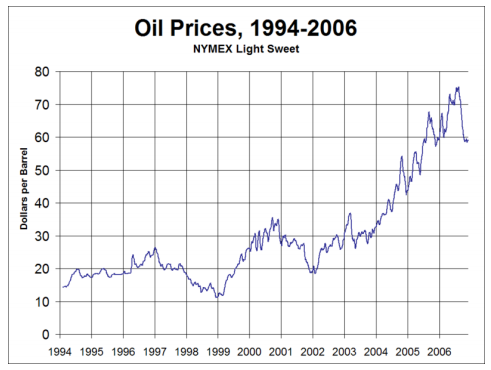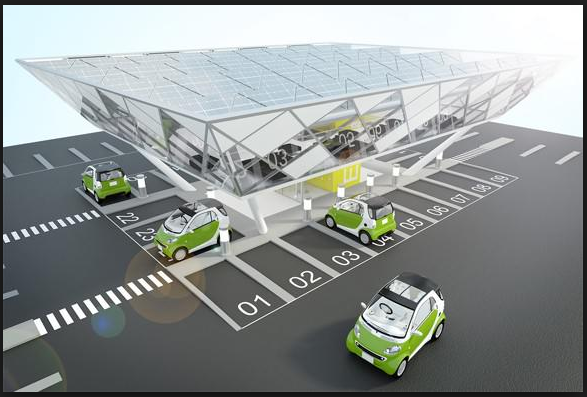Introduction
The modern automobile has evolved tremendously since the emergence of its prototype in the late 19th century. The emergence of the plug-in hybrid car, for instance, clearly evidences this evolution. The plug-in hybrid car is an automobile that operates on more than one power source (“Plug-In Hybrid Advantages and Disadvantages” par. 2). It can run on electric power from a built-in rechargeable battery pack, the traditional gasoline-powered engine, or use both simultaneously. The plug-in hybrid car is considered an important development since it was a response to deteriorating global climatic patterns. Several years into its existence, the plug-in hybrid car elicits ambivalent reactions from different quarters. This paper explores the salient aspects of the plug-in hybrid car with the aim of ascertaining its viability as the car of the future. To achieve this task, the paper starts by examining the reasons that led to the development of the car before exploring some of its key benefits and shortfalls. The paper then makes a conclusion and takes a position concerning the viability of the car.

The Reasons Behind The Development Of The Plug-In Hybrid Car
The development of the plug-in hybrid car was motivated by the need to reduce over-dependence on fossil fuels (Karplus, Paltsev, and Reilly 3). Since the advent of the industrial revolution, the world has grown in its dependence on fossil fuels at an alarming rate. Today, the U.S. alone needs close 20 million barrels of oil per day to power its economy. While this trend prevails across the world, the price of oil products has skyrocketed in the recent past. This rise in the cost of oil has made it expensive to maintain conventional cars due to their high oil consumption capacities. Thus, there has been a gradual, but steady move towards fuel-efficient vehicles. In response to this trend, automobile manufacturers came up with the plug-in hybrid car alongside other fuel-efficient cars.

Most importantly, environmental concerns such as global warming and erratic global climatic patterns also motivated the development of the plug-in hybrid car (“Plug-In Hybrids” par. 4). Arguably, the combustion of fossil fuels releases massive quantities of carbon dioxide and other harmful substances into the atmosphere. Studies have shown that these emissions are among the major causes of global warming. Therefore, the plug-in hybrid car was an attempt to mitigate the adverse effects of global warming.
Advantages Of The Plug-In Hybrid Car
This car is touted to have plenty of benefits. To begin with, the plug-in hybrid car offers amazing fuel economy. The Chevy Volt, built by General Motors, can go for up to 150 miles on one gallon of gasoline (“Plug-In Hybrid Advantages and Disadvantages” par. 5). It is considered the most fuel-efficient car among all hybrids, but most of them cover over 100 miles on one gallon when they use gasoline and electric power simultaneously. Moreover, the typical plug-in hybrid car can cover up to 50 miles without using any gasoline. This attribute makes it beneficial to its users since the daily driving needs of most individuals do not exceed 30-mile trips. As a result, the plug-in hybrid helps the owner to save significantly on fuel expenditure.
Besides its amazing fuel economy, it is also highly eco-friendly. Since the car uses less gas, it releases minimal amounts of greenhouse gasses (“Plug-In Hybrid Advantages and Disadvantages” par. 6). In this sense, it is considered an environmentally friendly car because it contributes less to global warming. In fact, the plug-in hybrid car releases lower amounts of these harmful gasses than the traditional hybrid car. As such, it is a potential tool for combating global warming menace from the transport industry perspective.
Disadvantages Of The Plug-In Hybrid Car
Despite the widespread propagation of the idea that the plug-in hybrid car is full of benefits, the car also has its share of shortfalls. Although it can be electrically powered for considerable distances, the time it takes to recharge its high capacity batteries is discouraging. On average, the plug-in hybrid car requires over seven hours of continuous charging to fully recharge (“Plug-In Hybrid Advantages and Disadvantages” par. 9). People who want to use the car several times during the day may have to use its gasoline component or a combination of gasoline and electric power.
Apart from the need for a long recharging time, the plug-in hybrid car runs on high-capacity lithium-ion batteries that are quite costly. The high cost of its batteries makes the car more expensive than other cars by a notable margin. This attribute limits its ownership to a particular category of people. As such, the campaigns, which are ongoing to popularize the plug-in hybrid car, may achieve their goal, but the car may not penetrate the market as much.
Moreover, the fact that the plug-in hybrid car uses gasoline makes it necessary for the owner to maintain the normal routine checkup that is characteristic of conventional cars. Consequently, the car requires more attention than a conventional car. This attention comes with cost implications. Additionally, the need to establish a supportive infrastructure to facilitate the recharging of the car’s batteries calls for extra investment (Peterson and Michalek 433).

Finally, its high-cost batteries have a short life span. This aspect implies that even though the car saves fuel, its users must prepare to bear other costs elsewhere. Further, when the car travels for long distances, it relies almost entirely on its gasoline engine, but unlike the conventional car, the engine has to bear the additional weight of the battery pack.
Summary and Conclusion
The plug-in hybrid car was, undoubtedly, a good idea since it aimed at solving several problems associated with conventional cars. However, its numerous shortfalls leave much to speculation. The debate is still ongoing about whether the plug-in hybrid car is the automobile of the future. However, for it to qualify as the automobile of the future, much still needs to be done to enhance the capacity of its batteries. It presents advantages such as eco-friendliness and minimal fuel consumption, which leads to reduced operational costs. However, the extra costs that accompany this car may discourage people from embracing it. It also requires long recharging periods that make it is component unsuitable for emergencies and daylong use. The negative attributes of the plug-in hybrid car seem to be more prominent than its positive attributes. As such, although electric cars were a novel idea, further research needs to be conducted to augment their capabilities before they can replace conventional cars.
Works Cited
Karplus, Valerie J., Sergey Paltsev, and John M. Reilly. “Prospects For Plug-In Hybrid Electric Vehicles in the United States and Japan: A General Equilibrium Analysis.” The Science and Policy of Global Change Report No. 172. Cambridge: MIT, 2009. Print.
Peterson, Scott B, and Jeremy J Michalek. “Cost-Effectiveness of Plug-In Hybrid Electric Vehicle Battery Capacity and Charging Infrastructure Investment for Reducing US Gasoline Consumption.” Energy Policy 52 (2013): 429-438. Print.
Plug In Hybrid Advantages and Disadvantages. Carsdirect, 2012. Web.
Plug-In Hybrids. U.S. Department of Energy, 2008. Web.
